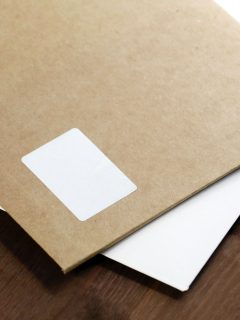Omnipresent debris, dust and dust. If this is what you associate with renovation, read our guide. We tell you how to prepare yourself for redecorating your home in such a way as to avoid damage to your furniture or walls. Find out how to protect your home before renovation.
What do you need to protect your floor during renovation?
Are you planning to paint your walls or replace your kitchen furniture with new ones? No matter what kind of renovation work you’re planning, make sure you protect the floor before you do it. This will prevent not only hard-to-remove stains, but also scratches and other damage. How do you protect your floor before renovation? You can choose one or more of the following solutions:
- Corrugated cardboard – opt for this especially if you have wooden parquet or laminate flooring. Corrugated cardboard and paper sheets will protect the floor from light impacts, which are not difficult to occur during renovation.
- Old blankets – this is a simple way with items you probably have at home. You can replace a blanket with a mat or carpet that is past its prime.
- Painter’s foil – works well when painting walls, but slips easily. You can increase its effectiveness by attaching it to the floor with painter’s tape.
How do I protect my windows before renovation without damaging them?
You already know how to protect the floor before renovation. Now it’s time for the windows. Remember to take care of not only the glazing, but also the window joinery. In addition, you can cover the fittings and seals. If you are wondering how to protect your windows before renovation, follow our tips:
- Take care of the glazing – use painter’s film for this. Apply it to the panes with special tape. Alternatively, you can cover the windows with newspaper or cardboard, but these are less effective than the film.
- Cover the window frames – you will need stretch film for this. When you wrap it around the frames, they are less exposed to dust.
- Protect hardware and seals – painter’s, masking and protection tapes are indispensable both before and during renovation. Use them to cover handles and hinges. Protect seals with silicone grease.
How do I avoid damaging furniture during renovation?
The next step is to protect your furniture. To avoid staining and damaging your cabinets, follow these guidelines:
- Move your furniture to another room – this is the easiest way to know how to protect your furniture before the renovation. If you have enough space in another room, move all the cupboards, tables and chairs into it until you have completed the planned work.
- Use painter’s film – it’s lightweight and easy to use. Cover your furniture with it and attach it to the furniture with painter’s tape. This will ensure that the foil remains stable.
- Wrap your furniture in stretch foil – a simple trick to avoid dirt and moisture that can affect furniture, especially wooden furniture.
- Cover countertops and other delicate surfaces with cardboard or special protective foam.
- Seal cupboards and drawers – don’t forget that dust can get inside furniture even through the smallest gaps. To prevent this, tape the edges of cabinets and drawers.
- Makeuse of old blankets, tablecloths and sheets – check the inside of your chest of drawers with textiles and then make an extra layer of protection from the things you find inside. Spreading the fabrics over the furniture will protect it not only from dirt, but also from knocks.
What else is worth bearing in mind during renovation work?
Take care of all other equipment in the room you are renovating. If you want to limit cleaning, protect walls and ceilings and reduce the risk of dust spreading to other parts of the home. Cover electrical sockets for the safety of the occupants and to protect the installation. Follow these steps:
- Secure household appliances and electronics – cover all such equipment with painter’s or stretch film. Unplug them or move them to another room.
- Protect walls and ceilings with plastic sheeting.
- Protect installations – cover switches and sockets with painter’s tape.
- Keep dust out – close doors to other rooms tightly.
- Regularly ventilate the room – open the windows from time to time and ventilate theroom . In addition, vacuum regularly. This will make cleaning up easier at the end of the renovation.
Make sure you have the right protective materials and avoid damage to the floor, windows and furniture!
Renovation begins long before new paint is applied to the walls or tiles are changed on the floor. One of the first steps is to protect your home: floors, windows, furniture, white goods, walls and ceilings. Before starting work, prepare all the materials and accessories you need, including painter’s film, tape and cardboard dividers. Also look for old blankets and tablecloths.
During the renovation, clean up as you go along, using a construction hoover, wet cloths and a mop. To get rid of tougher stains, you’ll need a special cleaner for paint and glue stains. And before you carry out any final tidying up, find out how to remove painter’s tape after a renovation.














